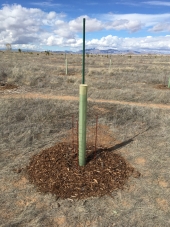
 1
1




 3
3




John Daley Bendigo, Australia The Enemy of progress is the hope of a perfect plan
Benefits of rainfall collection https://permies.com/t/88043/benefits-rainfall-collection
GOOD DEBT/ BAD DEBT https://permies.com/t/179218/mortgages-good-debt-bad-debt
 2
2




sow…reap…compost…repeat
 1
1




 2
2




sow…reap…compost…repeat




John Daley Bendigo, Australia The Enemy of progress is the hope of a perfect plan
Benefits of rainfall collection https://permies.com/t/88043/benefits-rainfall-collection
GOOD DEBT/ BAD DEBT https://permies.com/t/179218/mortgages-good-debt-bad-debt




 3
3




John Daley Bendigo, Australia The Enemy of progress is the hope of a perfect plan
Benefits of rainfall collection https://permies.com/t/88043/benefits-rainfall-collection
GOOD DEBT/ BAD DEBT https://permies.com/t/179218/mortgages-good-debt-bad-debt
 2
2




Invasive plants are Earth's way of insisting we notice her medicines. Stephen Herrod Buhner
Everyone learns what works by learning what doesn't work. Stephen Herrod Buhner
 5
5




 2
2




 3
3




 1
1





 4
4




sow…reap…compost…repeat
 1
1




 1
1




sow…reap…compost…repeat
 1
1




Amy Gardener wrote:Very helpful to see your picture Parker. If you are willing to consider another opinion, please consider bringing the water all the way out to the drip line. One thing I have noticed regarding tree wells that focus the water near the trunk instead of out by the drip line of the tree is that the trees are rarely saved. Looking at the tree as though from an aerial view, the place where the rain water drips down the tree canopy and into the soil to nourish the tree is at the outer most ring of the needles. That edge is where the tree takes in water, like the open end of a straw. The interior water collection by the tree trunk cannot take in the water like the drip line.
I highly recommend that you make a ringed trench as your water basin and leave the roots alone in the center and keep that inner area dry. The tree can drink water at the surface of the outer trench. If you have 2 or more trees where the drip lines overlap, make one outer trench that both can share (like an island). All my trees have outward expanding drip lines as they grow. I don’t water at all inside the drip line. The trees that have this drip-line-attention are truly thriving.
From your picture, it looks like the outermost dry wood pieces are at the drip line. That is where I would carefully make a shallow depression to give the thirsty tree a drink. Since the fine young roots may have been cut while digging out the well, perhaps an experiment with another tree using this drip line approach would enable you to compare outcomes.
Good luck and I hope your hard work to help these trees succeeds!
 2
2




sow…reap…compost…repeat





|
Murder? Well, I guess everybody has to have a hobby. Murder seems intense for a tiny ad.
The new permaculture playing cards kickstarter is now live!
https://www.kickstarter.com/projects/paulwheaton/garden-cards
|







